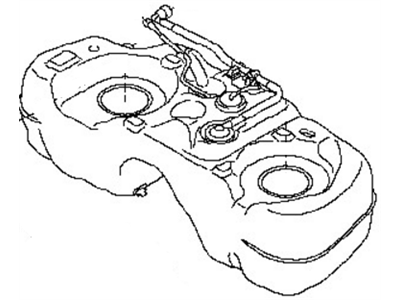×
- Hello
- Login or Register
- Quick Links
- Live Chat
- Track Order
- Parts Availability
- RMA
- Help Center
- Contact Us
- Shop for
- Nissan Parts
- Nissan Accessories

My Garage
My Account
Cart
Genuine Nissan Juke Fuel Tank
Gas Tank- Select Vehicle by Model
- Select Vehicle by VIN
Select Vehicle by Model
orMake
Model
Year
Select Vehicle by VIN
For the most accurate results, select vehicle by your VIN (Vehicle Identification Number).
2 Fuel Tanks found
Nissan Juke Fuel Tank Assembly
Part Number: 17202-1KM1A$865.78 MSRP: $1222.85You Save: $357.07 (30%)Ships in 1-3 Business DaysNissan Juke Fuel Tank Assembly
Part Number: 17202-1KM0A$915.66 MSRP: $1293.30You Save: $377.64 (30%)
Nissan Juke Fuel Tank
If you need any OEM Nissan Juke Fuel Tank, feel free to choose them out of our huge selection of genuine Nissan Juke Fuel Tank. All our parts are offered at unbeatable prices and are supported by the manufacturer's warranty. In addition, we offer quick shipping to have your parts delivered to your door step in a matter of days.
Nissan Juke Fuel Tank Parts Questions & Experts Answers
- Q: How to safely remove and refit a fuel tank on Diesel Nissan Juke?A:Before removing the fuel tank, drain all fuel from it, preferably when nearly empty due to the absence of a drain plug. Unscrew the fuel tank filler cap to relieve any residual pressure, then disconnect the battery negative terminal and siphon or hand-pump any remaining fuel. Disconnect the wiring connector and fuel hoses from the fuel pump/gauge sender unit. Raise the rear of the car and support it securely on axle stands, then remove the right-hand rear roadwheel. Detach the exhaust system intermediate pipe from below the fuel tank, and remove the heatshield. Release the retaining clips securing the handbrake cables to the fuel tank and rear axle. At the right-hand side rear of the fuel tank, release the retaining clip and disconnect the filler neck hose, then work under the right-hand wheel arch to release the retaining clip and disconnect the fuel vent pipe hose. Place a trolley jack with a block of wood beneath the tank and raise it to support the weight. Slacken and remove the bolts securing the fuel tank retaining straps to the vehicle underbody, then slowly lower the tank out of position. If the tank is contaminated, remove the sender unit/fuel pump and clean it with fresh fuel; replace the tank if damaged. For refitting, reverse the removal steps, ensuring to reconnect all breather hoses carefully to avoid trapping them, tighten the fuel tank mounting bolts to the specified torque, route all pipes and hoses correctly, and secure them with retaining clips. Finally, refill the tank with fuel and check for leaks before driving.









